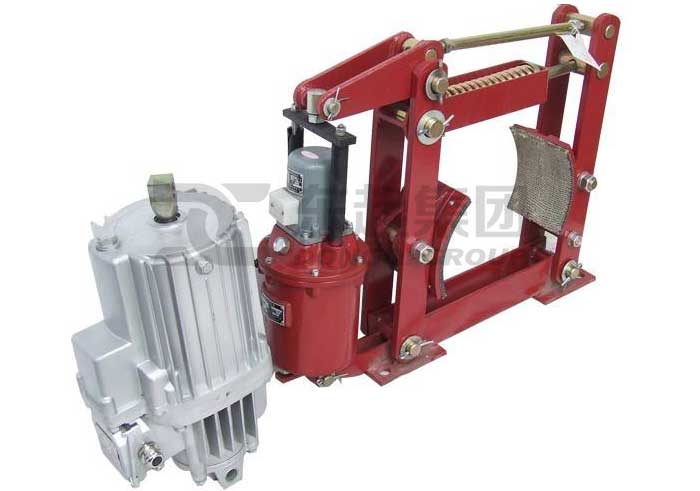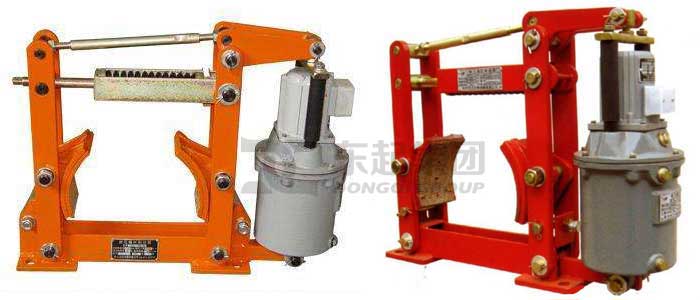Crane often needs to start, brake or stop. Therefore, a good and reliable crane brake device is needed.Crane brake system is divided into brake and stop.The crane brake system has the following functions: Support; Speed regulation or speed limit; Braking.
Brake: use friction to convert part or all kinetic energy of mechanical motion into heat energy, and achieve the purpose of deceleration or braking.
Stop: the use of mechanical backstop to support the object, to achieve the purpose of not moving the object.

The brake should meet the following basic requirements:
Brake type is divided into block type, belt type and disk type according to the structure; according to the working state, there are two types of normally closed type and normally open type.
Normally closed brake: when machine doesn’t work, the brake operation; when machine work, the brake release.
Normally open type brake: brake is often in the release state, only when required.

Advantages: block brake structure is simple, convenient installation and adjustment, widely used in various types of electric crane.
Block brake is divided into electromagnetic block brake and hydraulic brake block.
The electromagnetic brake block is divided into short distance and the long distance.
Short stroke electromagnetic block brake
Advantages: on the brake, brake action quickly; small volume and light weight; the hinge less death stroke is small; and the brake pad brake arm, the brake pad and the brake wheel contact wear uniform, uniform.
Disadvantages: suction is limited, is often used in braking moment smaller institutions, brake wheel diameter is not greater than 300 mm.
Therefore, when the brake torque is large, the electromagnetic block brake must be long stroke.
Compared with the hydraulic block brake, electromagnetic block brake big disadvantage is the electromagnet big impact, cause the mechanism of vibration.
Because of the frequent starting, braking and electromagnet collision, the service life of electromagnet is reduced, so it is necessary to overhaul and replace it frequently.
The hydraulic push rod releaser in hydraulic push rod brake pad, is an independent part of the hydraulic rod into electric hydraulic push rod and electromagnetic hydraulic push rod.
Electric hydraulic push rod:
Advantages: smooth movement; unit time of high engagement, thrust constant; motor power is small.
Disadvantages: due to the large inertia of motor rotor and lever system, long time of brake and release, it is not suitable for lifting mechanism.
Electromagnetic hydraulic push rod:
Advantages: both hydraulic brake and electromagnetic brake two advantages, stable braking, no noise, reliable work, long life.
Disadvantages: complex structure, high cost, difficult maintenance, popularization and application is limited.
The reliability of the brake is critical. First, the structure and performance of the brake must be mastered. The fault and its causes must be very clear. It needs to regular inspection and maintenance.
a.Insufficient braking torque:
b.The brakes suddenly failed:
The brake of the lifting mechanism must be checked once every operation starts; the brake of the running mechanism should be inspected every two to three days.Stress inspection: Transmission system of brake; Brake wheel; Brake belt; Brake lever system; Hydraulic system.
Main functions: support function; backstop effect; overrunning clutch function.
Commonly used stops are: ratchet wheel; roller type; belt type.